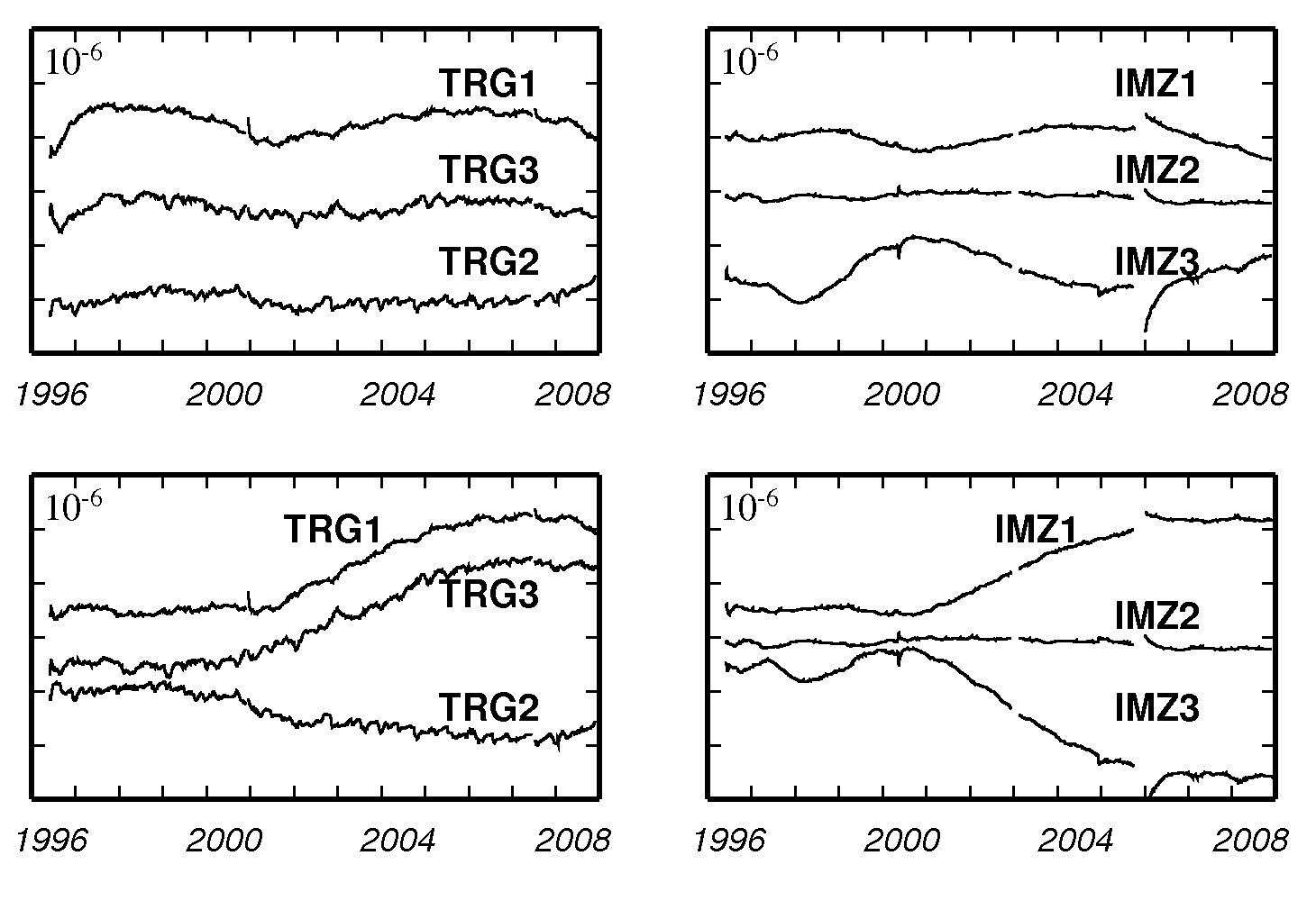要旨
近畿地方北部の敦賀・今津観測点においてボアホール型3成分歪計による観測が行われている。両観測点で得られた1996年から12.5年間のデータについて調べた。今津のデータに見られる季節変動は並行観測されている地下水位との相関が高く、敦賀のデータに見られる季節変動は降水量を入力としたタンクモデルを使って説明することができた。設置後の安定化過程を指数関数で近似し、これを除去した。季節変動、指数関数的減衰過程を除去した歪変化には、2000年頃と2005年頃に歪速度変化が見られる。この歪速度変化は機器の感度変化、および降水量の長期的変化では必ずしも説明できない。東海地域で同時期に発生したゆっくりすべりによって生じうる歪を計算して観測された非定常的な歪変化と比較したところ、歪の大きさは観測値の方が1桁大きいが主歪の方向は整合的だった。
Crustal strain has been observed using borehole-type multi-component strainmeters at Tsuruga and Imazu stations
in the northern part of the Kinki district, Japan. We investigated 12.5 years of strain data recorded at these stations
starting from 1996. Seasonal strain changes observed at Imazu correlate well with the changes in ground water level
observed there. Seasonal strain changes observed at Tsuruga are well described by the output of a tank model with daily
precipitation as input. Strain changes corresponding to the initial stabilization of the strainmeters are modeled by exponential
functions. After seasonal and exponential strain changes are removed, the strain history shows excursions around
2000 and 2005. These cannot be explained by temporal changes in strainmeter sensitivity or long-term variations of
precipitation. We calculated expected strain changes at the two stations caused by the slow slip events in the Tokai district
from 2000 to 2005 and found that calculated principal axes of strain are consistent with observations, although the
amounts of observed strain are about ten times larger than calculated ones.

図 季節変動を除いた歪データから指数関数曲線のあてはめを行った残差(左:敦賀、右:今津)
上段:期間全体に指数関数を適合
下段:1996〜1999年に指数関数を適合
| 
